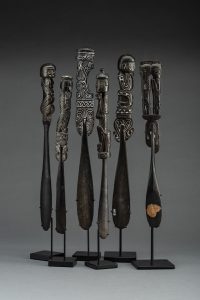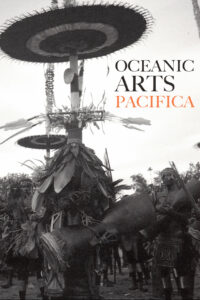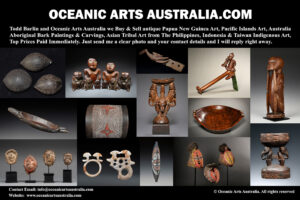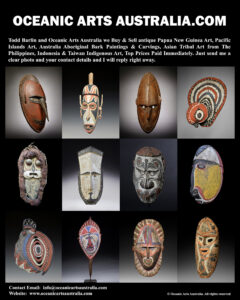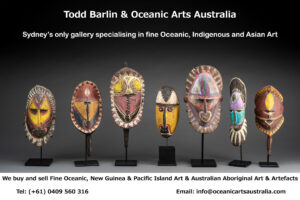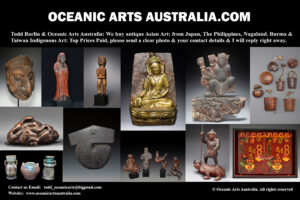Superb Old New Guinea Lime Spatulas Massim Culture Milne Bay Province Papua New Guinea
| Collection No. | SOLD PLEASE SEE OTHER ARTWORKS |
|---|---|
| Size | Average 30cm |
Superb Collection of Antique New Guinea Massim Lime Spatulas from the Milne Bay Province of Papua New Guinea 19th to early 20th Century
These Lime Spatulas show the high quality of aesthetics that Massim Master Carvers could achieve working on this scale. After carving & polishing the artist would put white lime into the incised designs to highlight them.
The utensils made for chewing betel nut are some of the most beautiful smaller-scale carvings made in New Guinea. Lime Spatulas are usually carved from a dark native hardwood with elaborately carved finials depicting stylized human ancestor figures and or animals.
Lime Spatulas were used for chewing betel nuts by dipping the end of the spatula into powdered lime (crushed & burnt sea shells) & licking it off as you put a Betel Nut from the Acacia Palm to chew together, the lime diffuses the alkaloids in the Betel Nuts.
In the Massim Culture chewing Betel Nuts is an important daily ritual. Betel Chewers would have a lime gourd & spatula for dipping into the lime, and older men with poor teeth would also have a small mortar and pestle for crushing the nuts into a mush that was easier to eat.
Many of the most beautiful Massim Lime Spatulas were made by Master Carvers for use only by important Chiefly Persons. The motifs are part of the Massim belief system & spirituality.
Provenance: The Todd Barlin Collection of Oceanic Art

